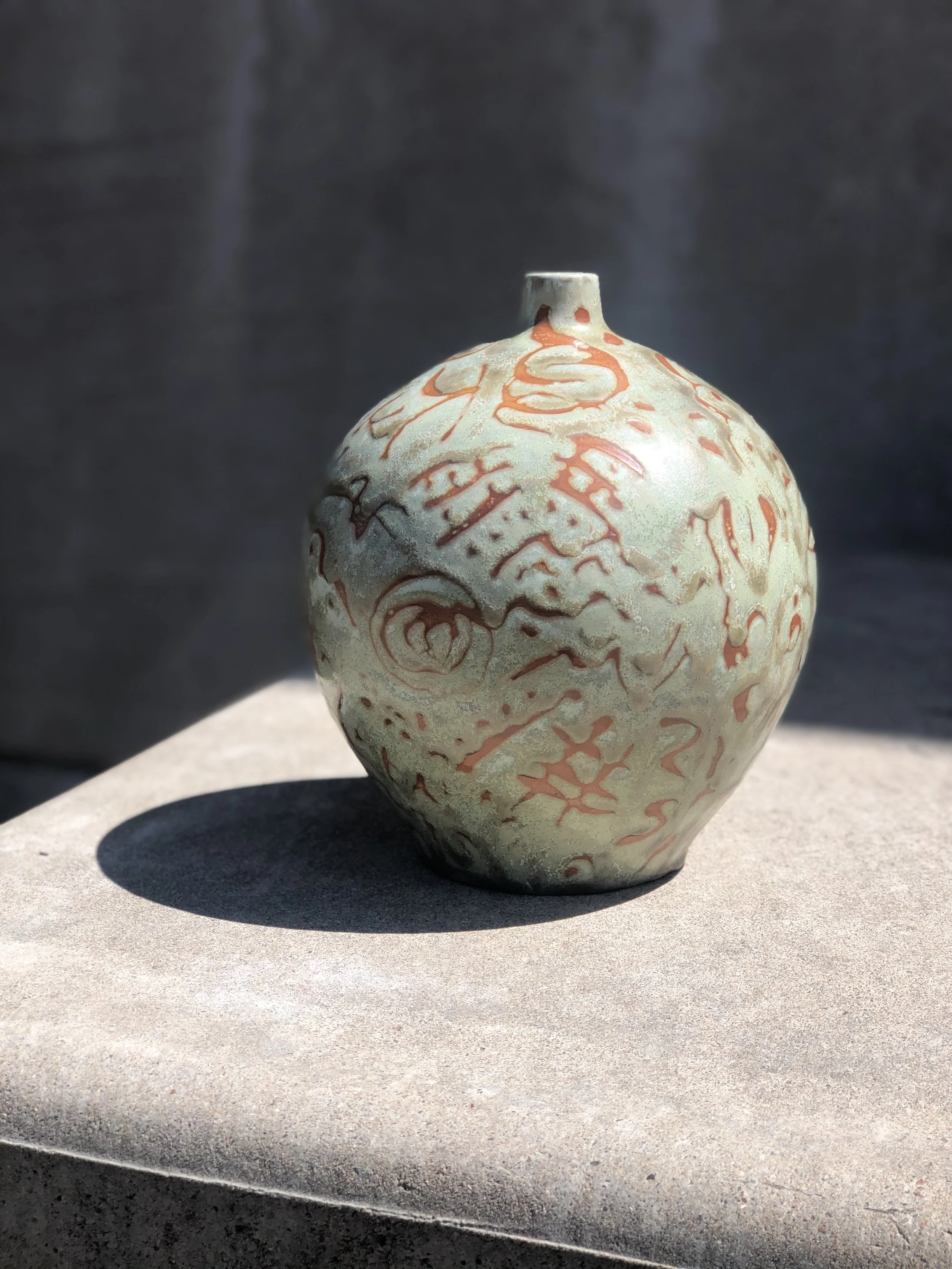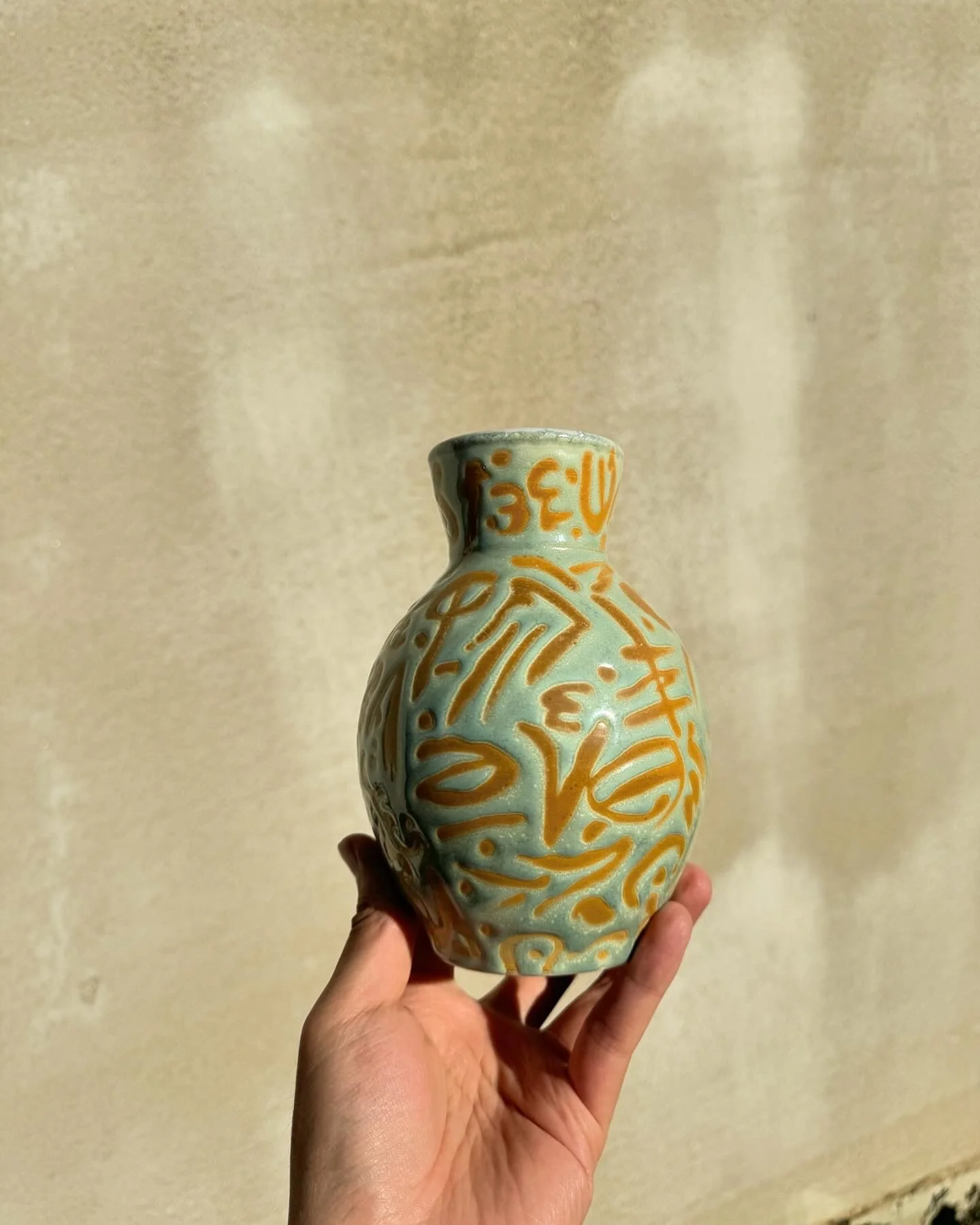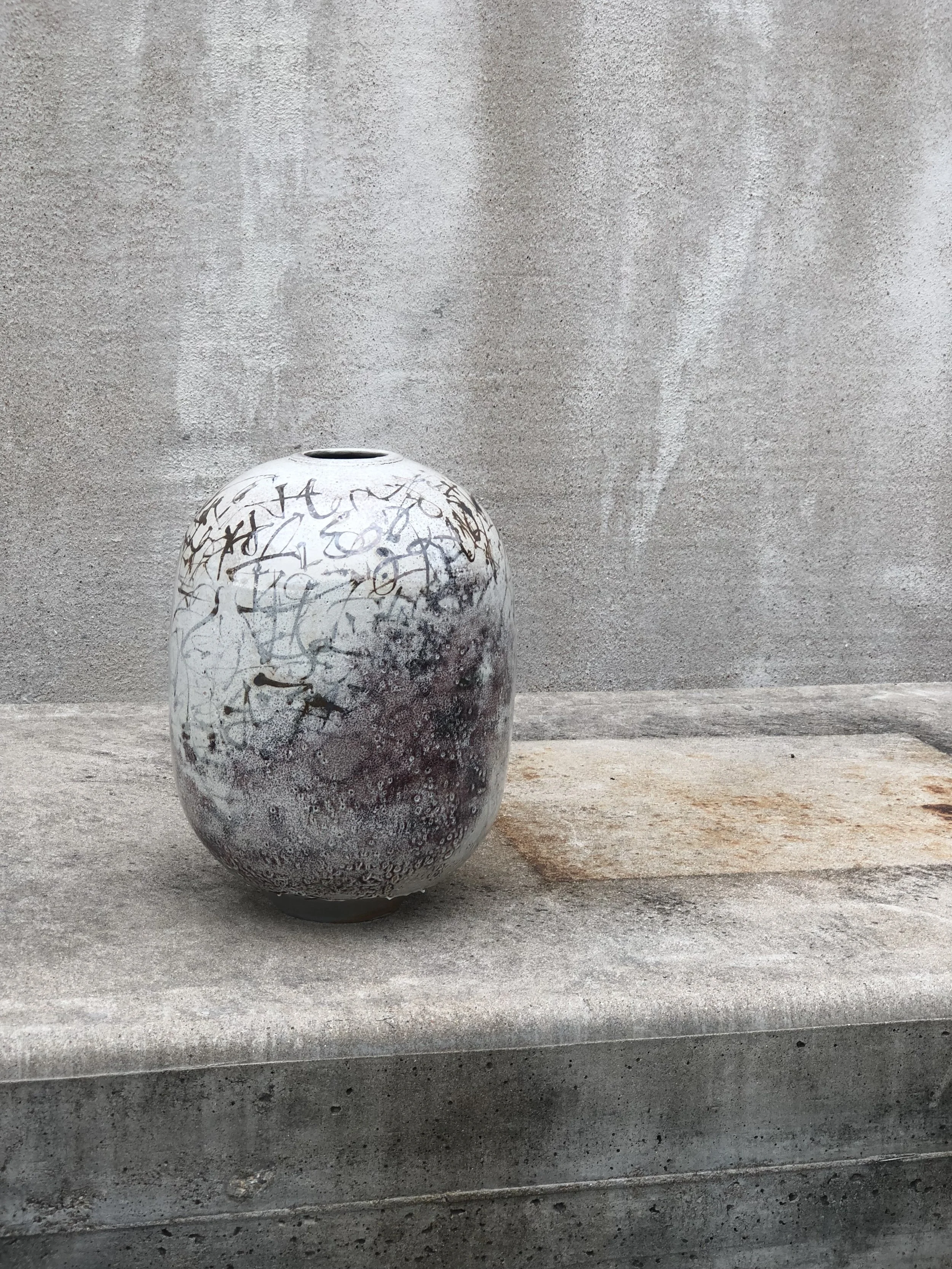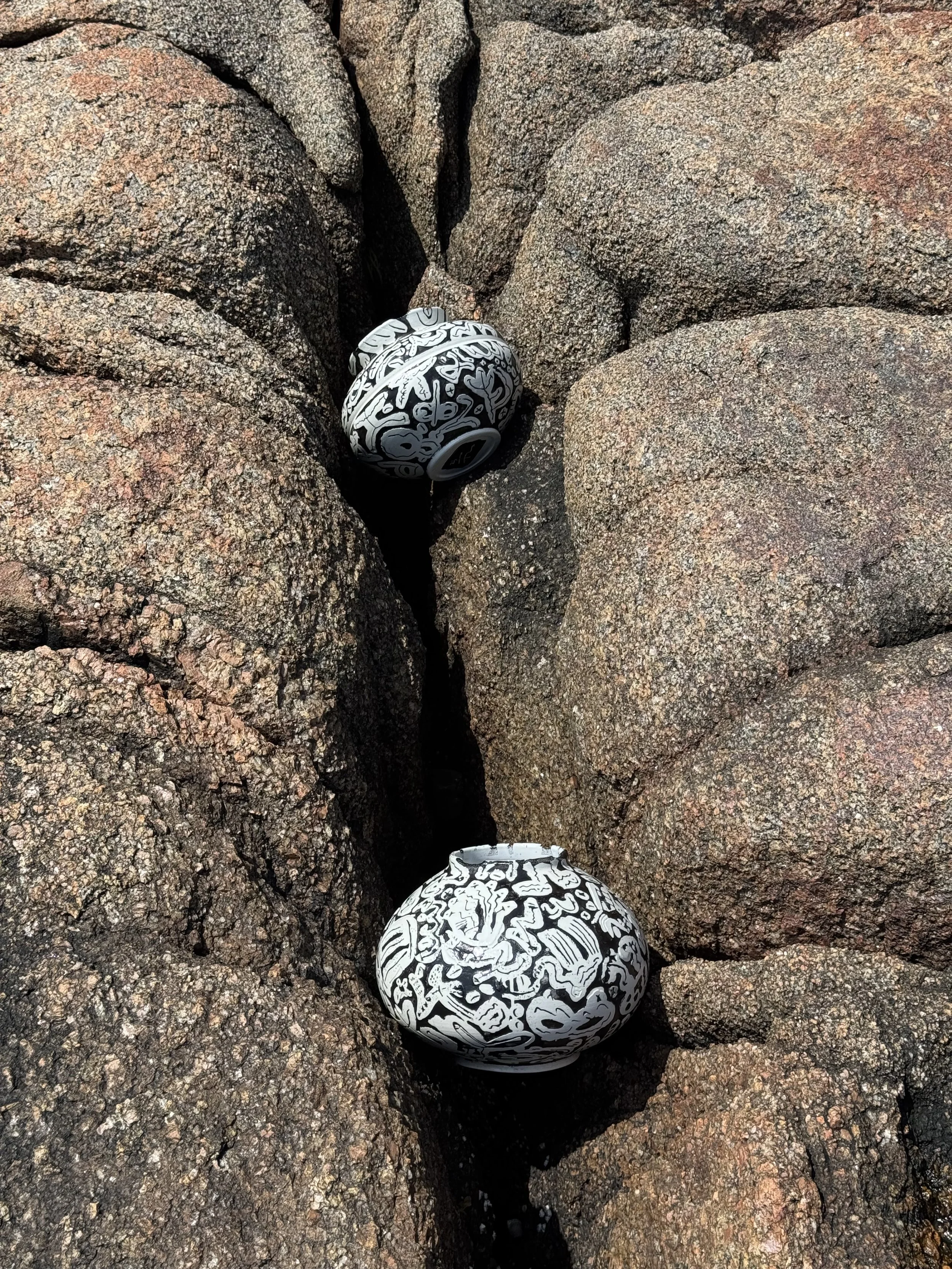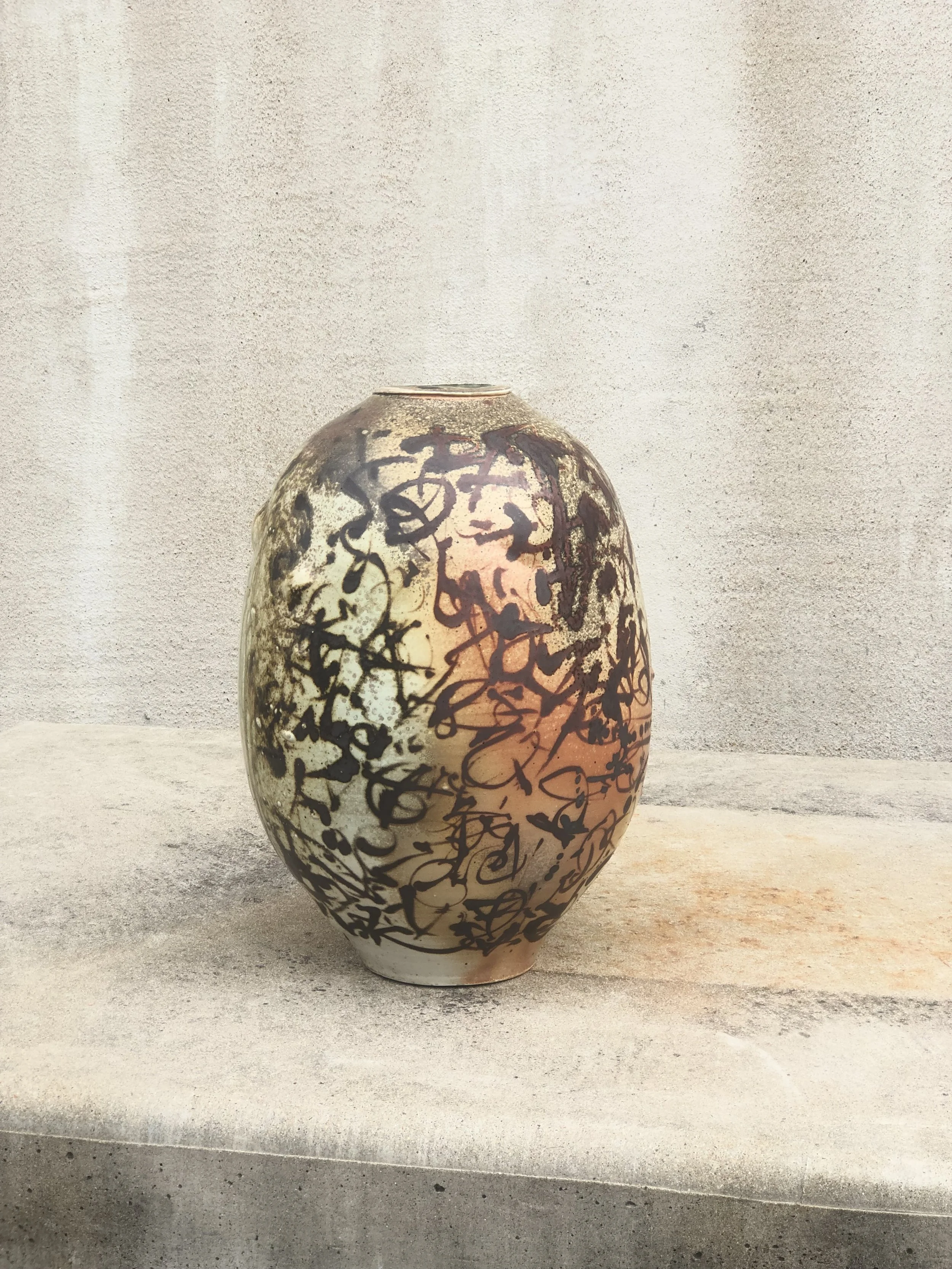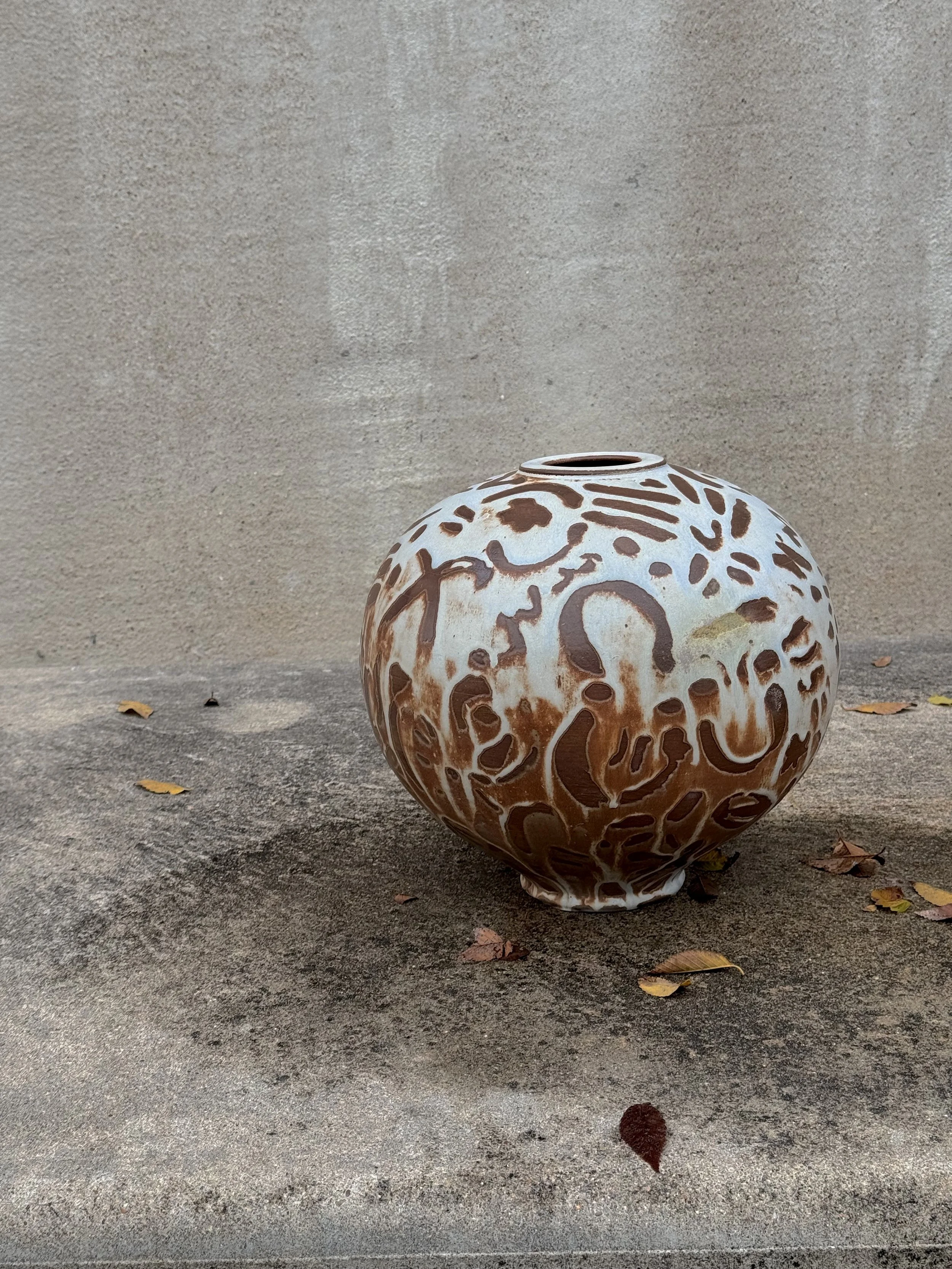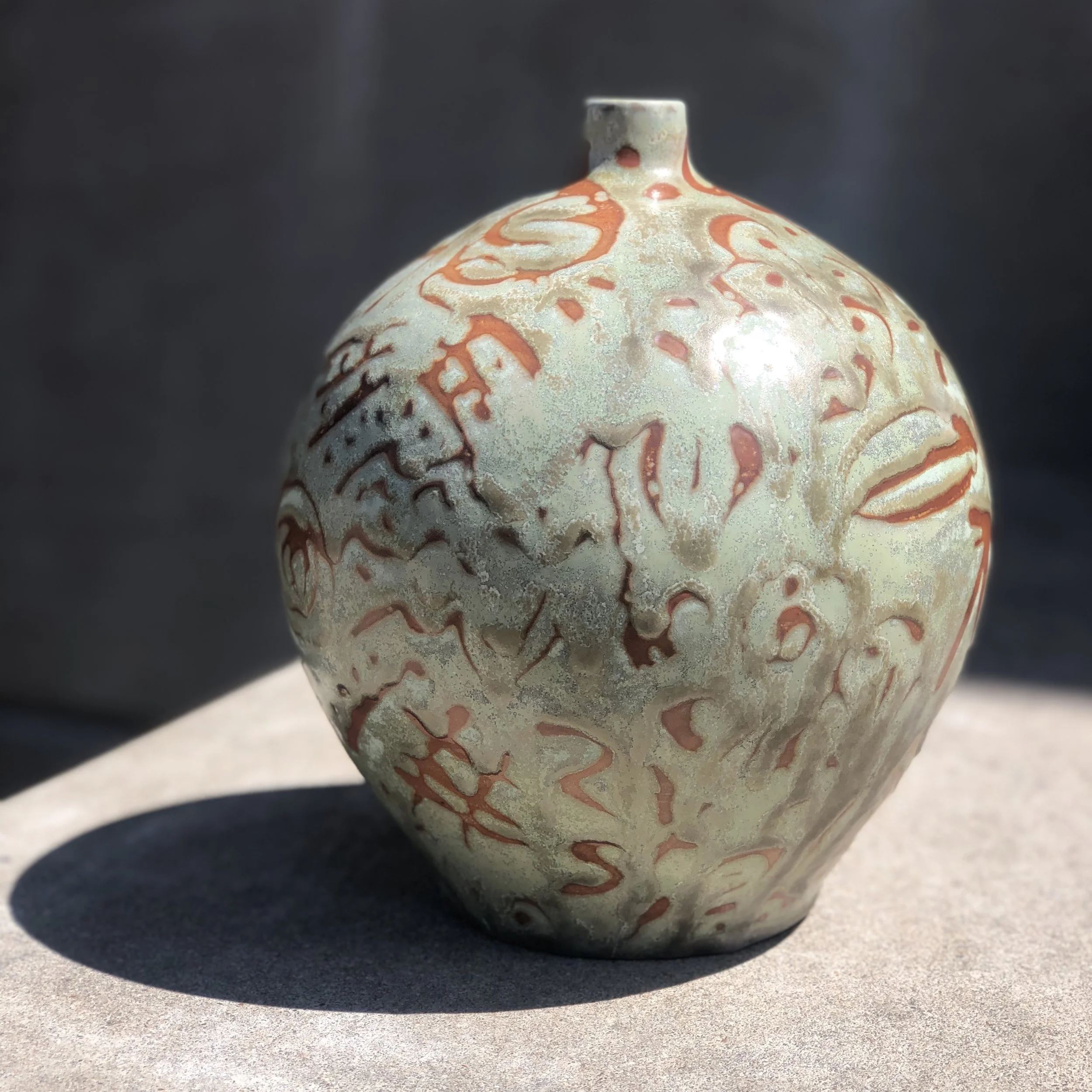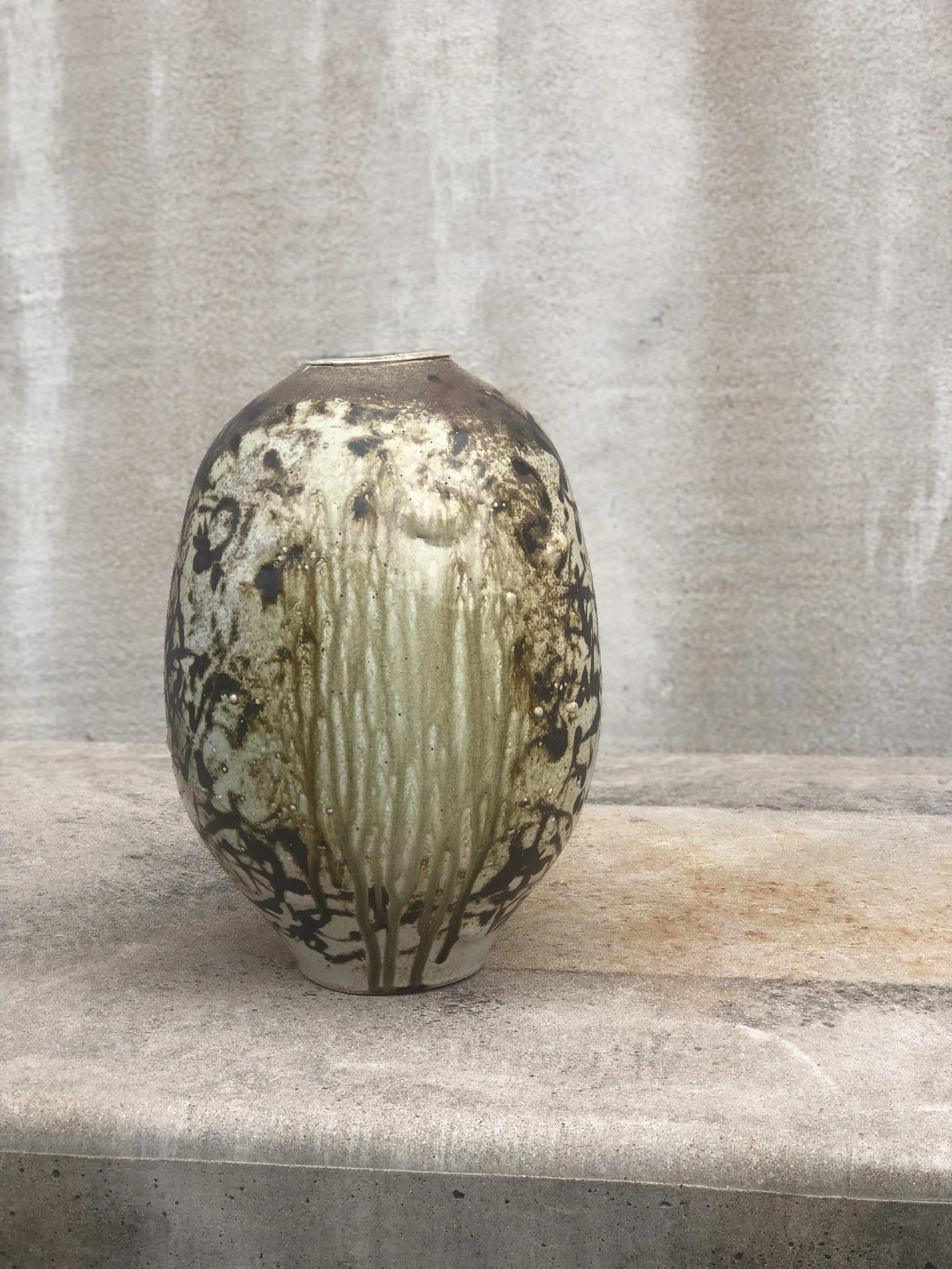Construction and deconstruction of language
This body of work is rooted in a 10-year exploration: a slow, deliberate evolution from calligraphic beginnings to the fragmented, pictorial arrangements I engage with today. What began as a study of Chinese characters, their form, rhythm, and lineage, has unfolded into a deeper dismantling: a personal, gestural deconstruction of language itself.
Ten years ago, I began breaking down Chinese characters not just as symbols, but as visual architectures. Before simplification, these logograms were closer to drawings, compressed maps of meaning. They contained not only language, but memory, cosmology, objecthood. That’s what fascinated me: their internal logic, so different from phonetic systems, where meaning is mediated through sound. Chinese characters offered direct visual cognition. They looked likewhat they meant. Like clay, they were vessels of sense.
Over time, my work shifted from calligraphic precision to pictorial disruption. Characters were no longer written but chopped, turned, mirrored, and scrambled, treated like clay: pulled apart, reformed, misremembered. In this state of disassembly, they became something else: a new visual syntax, unstable and open. The gestures remained, but the grammar unraveled.
The Process
This approach mirrors my ceramic process. My vessels are not only physical forms, but acts of inquiry. I use various resist mediums, wax, latex, Shellac, paper or cut outs, as tools to interrupt, conceal, or distort marks. These materials create layers of absence and silence, offering visual metaphors for censorship, forgetting, or transformation. Like language, clay remembers what we try to erase.
Each piece emerges through varied mentalities, some slow and fluid, others angular, rebellious, abrupt. Orientation shifts. Motif is both followed and refused. What connects them is the tension between tradition and rupture, between symbol and gesture, between vessel and text.
This work is a kind of visual poetry, not in the way of legible verses, but in the rhythm of form, fracture, and pause. Clay speaks in a dialect of pressure, heat, and memory. My aim is not to restore language, but to reimagine it, through touch, through structure, through the spaces where meaning begins to fall apart, which allows me to explore the space where duality starts to break. Languages become shapes.Meanings become motions.Symbols become feelings.
I’ve long been fascinated by the internal logic of logographic languages like Chinese, especially in their pre-simplified forms. Before simplification, these characters were more than words; they were drawings, maps, ideograms, compact vessels of meaning that embodied the object or concept they represented. In this way, they parallel the ceramic vessel: each is a container of significance, form married to function, image fused with meaning.
Unlike phonotactic languages, where letters represent abstract sounds, logographic systems operate through visual intuition, a logic of resemblance, compression, and recognition. That visual density is what I respond to, in both symbol and material. My work attempts to invent a new language, a visual system built on fracture, recombination, and the presence of gesture.
In many pieces, the ceramic surface becomes a field of inscription. Characters are broken into radicals, displaced, mirrored, turned, repeated. Sometimes the original meaning vanishes entirely. What remains is a rhythm of marks, partial memories of language, ghosts of structure, a new kind of visual poetry written through clay.
This is not a return to ancient forms, nor a critique of modern simplification.
It is an open experiment.
A language in the making.
